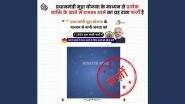New Delhi [India], Dec 7 (ANI): The people residing in the national capital woke up to a cold and hazy morning on Friday with mercury sinking to 11 degree celsius, one notch below the season's average, as per India Meteorological Department (IMD).
According to the forecasting agency, shallow and moderate fog will continue to engulf Delhi throughout this week. The maximum and minimum temperatures today will likely be 24 degrees Celsius and 10 degree Celsius.
Skymet, a private weather forecaster stated, a fresh Western Disturbance is likely to affect the northern range of hills December 8 onward. However, due to this system, northwestern plains including Delhi will not be affected. All in all between December 9-11, sky can become partly cloudy but there will be no rains.
However, despite the onset of winters in the capital, the Delhiites continue to gasps for breath as the air quality has not shown any substantial improvement from the past few mnths. According to the state-run System of Air Quality and Weather Forecasting And Research (SAFAR), the overall quality of the region docked at 346 in the morning, which falls under the 'very poor' quality.
The AQI between the range of 0-50 is considered good while the range beyond 500 is contemplated as hazardous. The air quality index between the range 51 to 100 is marked as satisfactory while 101-200 range is touted as moderate. The range of 201-300 comes under the category of poor whereas 401-500 range is considered as severe.
At Dhirpur, the AQI was 434 at 8:45 am, while in Mathura Road area it dipped hazardous category with at 454 . Furthermore, AQI near Pitampura, Airport Terminal 3 and Delhi University stood at 348, 399 and 257 respectively.
A new research paper titled "The study, called the India State-Level Disease Burden Initiative", published in The Lancet Planetary Health journal revealed that one out of every eight deaths in India is attributable to the menace of air pollution.
The report further revealed that the average life expectancy in India would have been 1.7 years higher if the toxic air level was less than the minimal level causing health issues.
"Air pollution now contributes to more disease burden in India than non-communicable diseases caused by tobacco use. The polluted air causes lower respiratory infections, chronic obstructive lung disease, heart attacks, stroke, diabetes, and lung cancer,", stated the study.
Furthermore, the report suggested that the national capital had the highest annual population-weighted mean Particulate Matter 2.5 last year, followed by neibhouring Uttar Pradesh, Bihar, and Haryana. All had mean values greater than 125 µg/m3. Of the 1.24 million deaths attributable to air pollution, more than half were people below 70 years.
"In India, the major sources of ambient particulate matter pollution are coal burning for thermal power production, industry emissions, construction activity and brick kilns, transport vehicles, road dust, residential and commercial biomass burning, waste burning, agricultural stubble burning, and diesel generators," the study stated.(ANI)
(This is an unedited and auto-generated story from Syndicated News feed, LatestLY Staff may not have modified or edited the content body)













 Quickly
Quickly





















